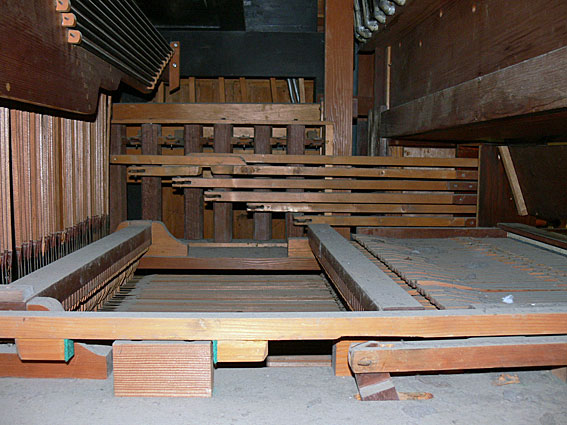Baptist Church
Semaphore
J.E. Dodd, Adelaide, 1901
1 manual, 6 speaking stops, 1 coupler, mechanical action

From the 1999 OHTA Conference Book:
Baptist ministry in Semaphore commenced in 1878. The church building, which opened in 1883 was built in Classical Renaissance Style, as were the Baptist churches at Norwood (1869), Tynte Street (1870) and Knightsbridge, Leabrook (1884). All of these were modelled after the great London Baptist Church known as Spurgeon's Tabernacle, Charles Spurgeon being a powerful and popular preacher in Victorian London. Cornish architect, Phillip Sambell, had berated "Pointed architecture" in the Baptist Magazine of Great Britain in 1867, arguing that it was 'par excellence, from its origins Romish-Priest-architecture and was designed to thoroughly subserve their superstition'. He argued against the space wastage and costs involved in the Pointed style, suggesting that the money saved could be better put to use in providing more comfort and greater accommodation.
The single manual organ appears much larger than it is.
The specification is:
The instrument is a single manual organ with the following specification:
| MANUAL Open Diapason Stopped Diapason Bass Claribel Dulciana Principal Wald Flutet Manual to Pedal coupler PEDAL Bourdon |
8ft 8ft 8ft 8ft 4ft 4ft 16ft |
56 pipes bass in façade unenclosed 12 pipes CC-BB 44 pipes Tenor C 56 pipes 4 bottom notes unenclosed 56 pipes 56 pipes 30 pipes unenclosed |
Balanced swell pedal
2 composition pedals
Mechanical key and stop action
Hand blowing available
All of the manual pipework is enclosed in a swell box, with the shutters facing the rear of the organ, except for the bass of the Open Diapason and the four bottom notes of the Dulciana, placed inside the organ at floor level.


Photos: JRM (August 2011)